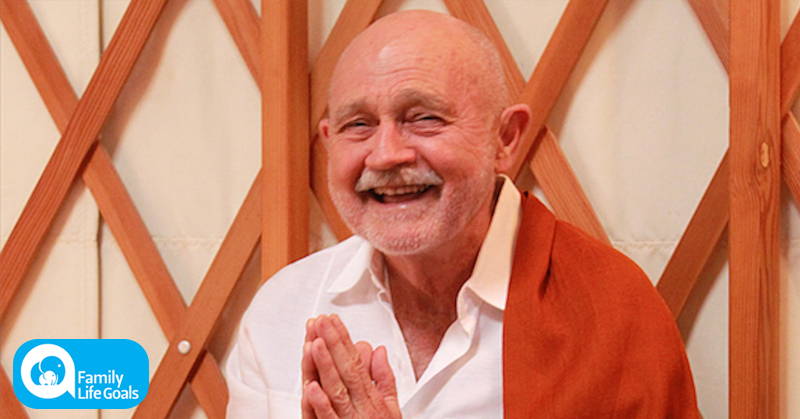Stress is the unwanted companion with a stick, tailgating every person and stabbing the sharp point wherever he can reach. Even if we find a way to get rid of his presence, he always finds a way to creep back up. He sticks his nose in every bit of your life, home, work, relationships, everyday living.
Troubles of Stress

We suffer from insomnia, depression, headaches, gastronomical disorders. Anxiety also causes accelerated aging and heart issues. (1) For me, stress antagonizes my gut and my racing hearts prevents me from falling asleep. I do what I can to relax. I practice yoga, meditate, play calming music, or sip tea while listening to the birds or the rain. These tactics work, except for one major problem: I don’t have time!
Deadlines, commitments, obligations all have their way of stalking my relaxing time. In the juggling of life, the first ball to drop is relaxation. After all, it’s impossible to feel zen when work is piling over your head, the house is a mess, and your significant other is upset you haven’t spent quality time together for so long. So I skip yoga, toss and turn all night, drink an extra large coffee the next day, and the cycle repeats itself.
The is an Another Way
There is age-old advice passed down through Tibetian masters: “Small moments, many times.” Read the quote again. Now internalize it. This is the key to achieving stress-free lives.
Here is a technique that puts this quote into practice. Culadasa is a meditation instructor in Arizona and he has developed these four tips his students find extremely helpful when they return to urban life to continue to channel the zen they have learned from their master. Reduce anxiety and regain a calm mind, under 30 seconds.
The Mindful Pause
In this exercise, you are not trying to force stress away by whitewashing your mind. It’s meditation which will bring you in touch with your body and surroundings. Science has discovered that meditating decreases matter in the amygdala, the section of the brain that is in charge of anxiety and fear. (2)
One great perk about this exercise is that you can do it anyway, in any position. No matter what pressing matter is at hand, you can spare half a minute to collect yourself. You can pause at work in the middle of crunch time, you can be sitting on public transit, waiting for an appointment or interview, or even when you have a couple of seconds to spare in the middle of a hectic day. “No time” is a disqualified excuse.
This is how it goes:
Step 1: Take a deep breath.
Inhale slowly. Fill your lungs from the stomach then up your torso and chest. This connects your breath with your mood. With slow, deep, breathing, you can actually create relaxation.
Step 2: Focus on your body.
Feel the sensations in your body. Perhaps you’ll notice the clothes against your skin, a little itch on your leg, the wind blowing your hair. It can be a mixture of tingling or it can just be your back against the seat. Whatever you feel, it’s perfect.
If you note sensations that are related to stress, focus on those too. It can be a racing heart, a tightness in the chest, or a twisted gut. Observe these feelings without getting caught up with your anxious thoughts. Don’t fight the feeling, just flow with it.
This step can be done within one breath or longer, depending on how you feel.
Step 3: Concentrate on your breath.

Notice the air touching your nostrils and other sensations that anchor you to the present. You don’t need to slow or deepen or breaths. Breathe whichever way your body wants. This can also be one in just one breath or it’s up to you to continue it.
Step 4: Keep calm and carry on!
Return to the world around you. Yet don’t dive back into the mayhem. Don’t jump for your phone, or start running for the bus. Take another second to absorb the peace you have just created, and return to your life at more leisurely pace. (3)
And Repeat
Now that you have acquired this valuable skill, don’t forget to use it. Set it into your ongoing routine, like right before you log into your computer or right before you go to sleep.
This technique is not suppressing your anxiety, so don’t panic if your stress is still there after you complete the mindful pause. This is meant to remind you that this feeling is only temporary and as King Soloman said, “This too shall pass.” By observing your emotions, you will find relief.
Sources:
(1) R. Morgan Griffin http://www.webmd.com/balance/stress-management/features/10-fixable-stress-related-health-problems
(2) Britta K., James Carmody, Mark Vangel, Christina Congleton, Sita M. Yerramsetti, Tim Gard, Sara W. Lazar (January 30. 2011) http://www.psyn-journal.com/article/S0925-4927(10)00288-X/abstract?cc=y=
(3) Jon Krop (March 3, 2016) http://www.upworthy.com/a-meditation-teachers-4-tips-for-calming-down-and-refocusing-in-just-30-seconds?c=ufb5


